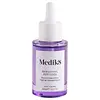What's inside
What's inside
 Key Ingredients
Key Ingredients

 Benefits
Benefits

 Concerns
Concerns

No concerns
 Ingredients Side-by-side
Ingredients Side-by-side

Water
Skin ConditioningTriheptanoin
Skin ConditioningPropanediol
SolventC9-12 Alkane
SolventSimmondsia Chinensis Seed Oil
EmollientCetearyl Olivate
Sorbitan Olivate
EmulsifyingGlycerin
HumectantMelia Azadirachta Flower Extract
Skin ConditioningBakuchiol
AntimicrobialSchisandra Chinensis Fruit Extract
Skin ConditioningEragrostis Tef Seed Extract
EmollientAnigozanthos Flavidus Flower/Leaf Extract
Skin ConditioningFicus Carica Fruit Extract
HumectantPunica Granatum Fruit Extract
AntioxidantMorus Alba Fruit Extract
AntioxidantGinkgo Biloba Nut Extract
Skin ConditioningSodium Stearoyl Glutamate
CleansingCoccinia Indica Fruit Extract
Skin ConditioningCaprylyl/Capryl Glucoside
CleansingSclerotium Gum
Emulsion StabilisingSodium Levulinate
Skin ConditioningSodium Anisate
AntimicrobialCitric Acid
BufferingCoco-Caprylate/Caprate
EmollientDecyl Glucoside
CleansingSodium Phytate
Tocopheryl Acetate
AntioxidantLauryl Glucoside
CleansingVaccinium Angustifolium Fruit Extract
Skin ProtectingDiisopropyl Adipate
EmollientTriethyl Citrate
MaskingCaprylic/Capric Triglyceride
MaskingVanilla Planifolia Fruit Extract
Skin ConditioningRosa Damascena Extract
MaskingAlcohol
AntimicrobialCitrus Aurantium Dulcis Peel Extract
Emulsion StabilisingRubus Idaeus Fruit Extract
AstringentPyrus Malus Fruit Extract
Skin ConditioningMusa Sapientum Fruit Extract
Skin ConditioningCitrus Aurantium Amara Leaf/Twig Extract
Skin ConditioningCinnamomum Camphora Linalooliferum Wood Extract
PerfumingWater, Triheptanoin, Propanediol, C9-12 Alkane, Simmondsia Chinensis Seed Oil, Cetearyl Olivate, Sorbitan Olivate, Glycerin, Melia Azadirachta Flower Extract, Bakuchiol, Schisandra Chinensis Fruit Extract, Eragrostis Tef Seed Extract, Anigozanthos Flavidus Flower/Leaf Extract, Ficus Carica Fruit Extract, Punica Granatum Fruit Extract, Morus Alba Fruit Extract, Ginkgo Biloba Nut Extract, Sodium Stearoyl Glutamate, Coccinia Indica Fruit Extract, Caprylyl/Capryl Glucoside, Sclerotium Gum, Sodium Levulinate, Sodium Anisate, Citric Acid, Coco-Caprylate/Caprate, Decyl Glucoside, Sodium Phytate, Tocopheryl Acetate, Lauryl Glucoside, Vaccinium Angustifolium Fruit Extract, Diisopropyl Adipate, Triethyl Citrate, Caprylic/Capric Triglyceride, Vanilla Planifolia Fruit Extract, Rosa Damascena Extract, Alcohol, Citrus Aurantium Dulcis Peel Extract, Rubus Idaeus Fruit Extract, Pyrus Malus Fruit Extract, Musa Sapientum Fruit Extract, Citrus Aurantium Amara Leaf/Twig Extract, Cinnamomum Camphora Linalooliferum Wood Extract
Caprylic/Capric Triglyceride
MaskingHelianthus Annuus Seed Oil
EmollientBakuchiol
AntimicrobialKrameria Triandra Root Extract
Skin ConditioningPlukenetia Volubilis Seed Oil
EmollientMoringa Oleifera Seed Oil
EmollientTocopherol
AntioxidantCentella Asiatica Leaf Extract
Skin ConditioningAloe Barbadensis Flower Extract
EmollientCorallina Officinalis Extract
Skin ConditioningCoccinia Indica Fruit Extract
Skin ConditioningSolanum Melongena Fruit Extract
Skin ConditioningSimmondsia Chinensis Seed Oil
EmollientCurcuma Longa Root Extract
MaskingOcimum Basilicum Flower/Leaf Extract
TonicOcimum Sanctum Leaf Extract
Skin ConditioningEclipta Prostrata Extract
Skin ConditioningMelia Azadirachta Leaf Extract
Skin ConditioningMelia Azadirachta Flower Extract
Skin ConditioningUndecylenoyl Phenylalanine
Skin ConditioningOlea Europaea Fruit Oil
MaskingCaprylic/Capric Triglyceride, Helianthus Annuus Seed Oil, Bakuchiol, Krameria Triandra Root Extract, Plukenetia Volubilis Seed Oil, Moringa Oleifera Seed Oil, Tocopherol, Centella Asiatica Leaf Extract, Aloe Barbadensis Flower Extract, Corallina Officinalis Extract, Coccinia Indica Fruit Extract, Solanum Melongena Fruit Extract, Simmondsia Chinensis Seed Oil, Curcuma Longa Root Extract, Ocimum Basilicum Flower/Leaf Extract, Ocimum Sanctum Leaf Extract, Eclipta Prostrata Extract, Melia Azadirachta Leaf Extract, Melia Azadirachta Flower Extract, Undecylenoyl Phenylalanine, Olea Europaea Fruit Oil
 Reviews
Reviews

Ingredients Explained
These ingredients are found in both products.
Ingredients higher up in an ingredient list are typically present in a larger amount.
Bakuchiol is a plant-derived antioxidant (it's vegan!). It is often called the replacement for retinol although it is not part of the same family.
It has similar effects as retinol: skin smoothing, reducing discoloration, and preventing wrinkles. It does not cause as much irritation as traditional retinoids.
Bakuchiol works by breaking down free radicals and stimulating collagen production in skin.
Combining bakuchiol with retinol will not have adverse side effects. Studies show using them will just boost the benefits. Bakuchiol is also found to help stabilize retinol.
While bakuchiol does not make the skin more sun sensitive, we recommend wearing SPF on a daily basis.
Read more about traditional retinol
Learn more about BakuchiolThis ingredient is an emollient, solvent, and texture enhancer. It is considered a skin-softener by helping the skin prevent moisture loss.
It helps thicken a product's formula and makes it easier to spread by dissolving clumping compounds.
Caprylic Triglyceride is made by combining glycerin with coconut oil, forming a clear liquid.
While there is an assumption Caprylic Triglyceride can clog pores due to it being derived from coconut oil, there is no research supporting this.
Learn more about Caprylic/Capric TriglycerideCoccinia Indica Fruit Extract is also known as Ivy Gourd Fruit Extract. It has skin conditioning properties.
Melia Azadirachta Flower Extract is from the Neem tree. Neem trees originate from India.
Melia Azadirachta Flower Extract contains antioxidants. Antioxidants help fight free-radicals. Free-radicals are molecules that may damage your skin cells, such as pollution.
The flowers of this tree are lilac colored.
Learn more about Melia Azadirachta Flower ExtractThis oil comes from the seeds of the desert shrub called Jojoba. It is more commonly known as jojoba oil, a non-comedogenic oil.
Jojoba oil does not contain fragrance and has many fatty-acids, making it a great soothing ingredient.
It also contains Vitamin E, a great moisturizing ingredient. Vitamin E is also an antioxidant and protects your skin against oxidative damage.
This ingredient humectant properties, meaning it helps draw moisture from the air. This helps keep your skin hydrated.
While jojoba has antibacterial properties, it is only able to kill some strains of bacteria.
Studies also show it helps in wound healing. In fact, Indigenous cultures have used jojoba as a moisturizer and to help treat burns for centuries.
Fun fact: Jojoba oil similar to natural human skin sebum, so it has a great effect on dry skin. It is also promising with helping to regulate sebum production.
Due to its fatty acid content, Jojoba oil may not be fungal acne safe. We recommend speaking with a professional if you have any concerns.
Learn more about Simmondsia Chinensis Seed Oil